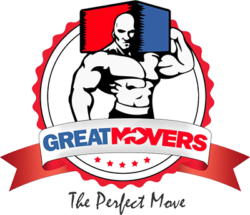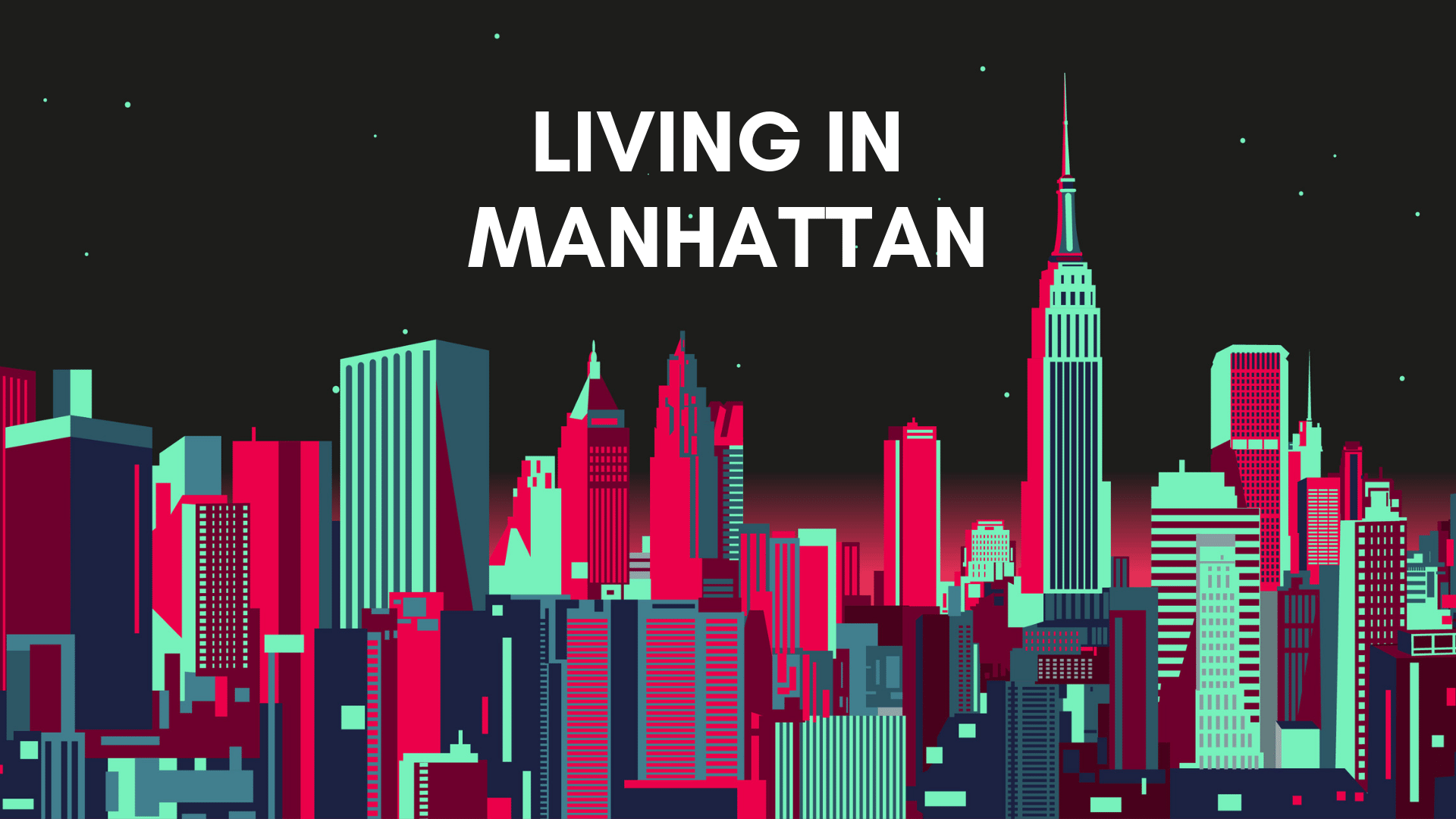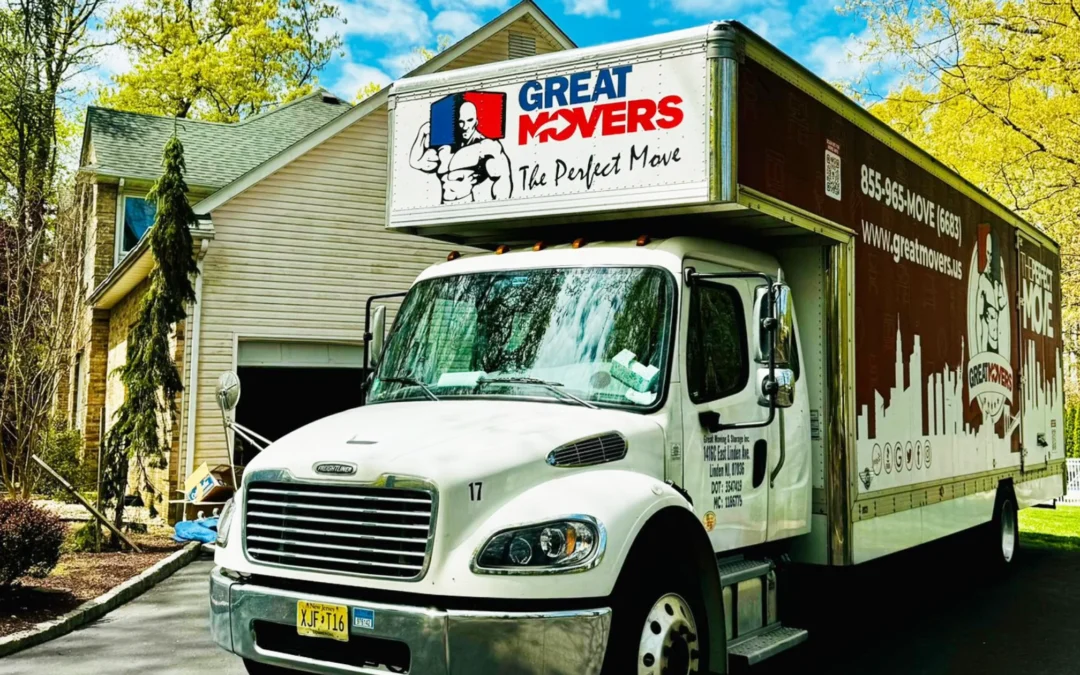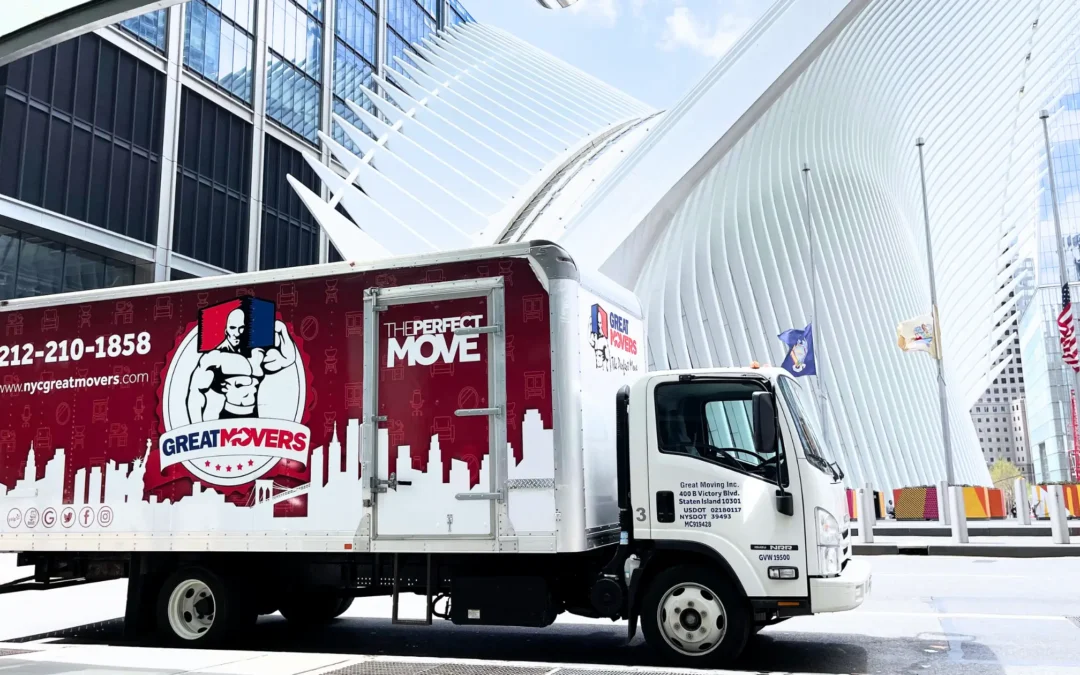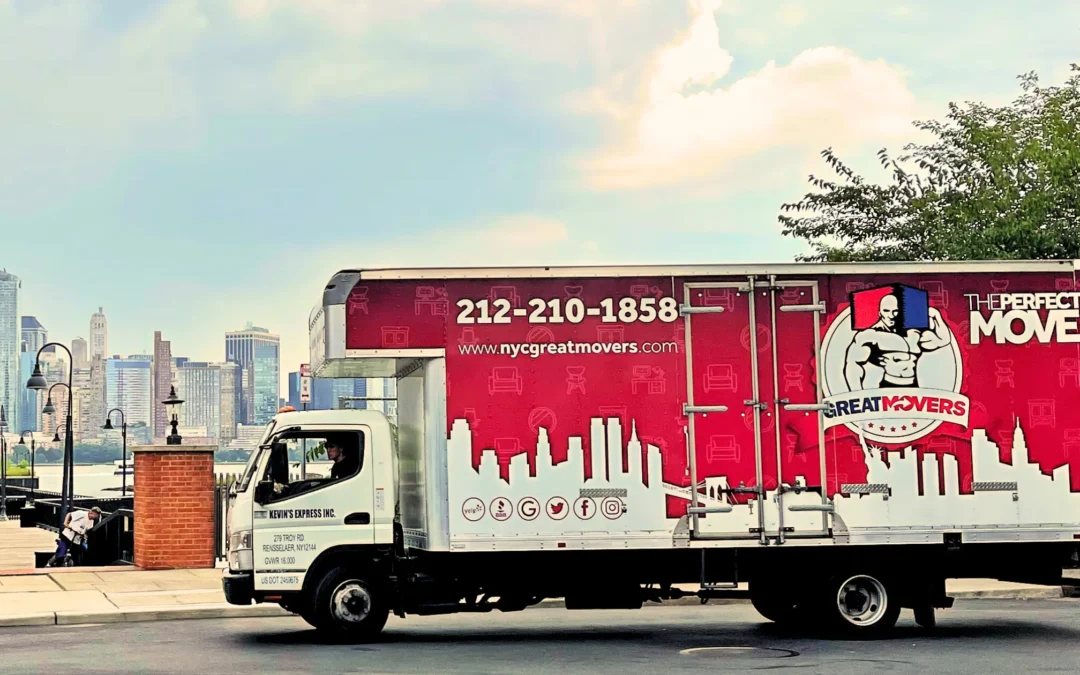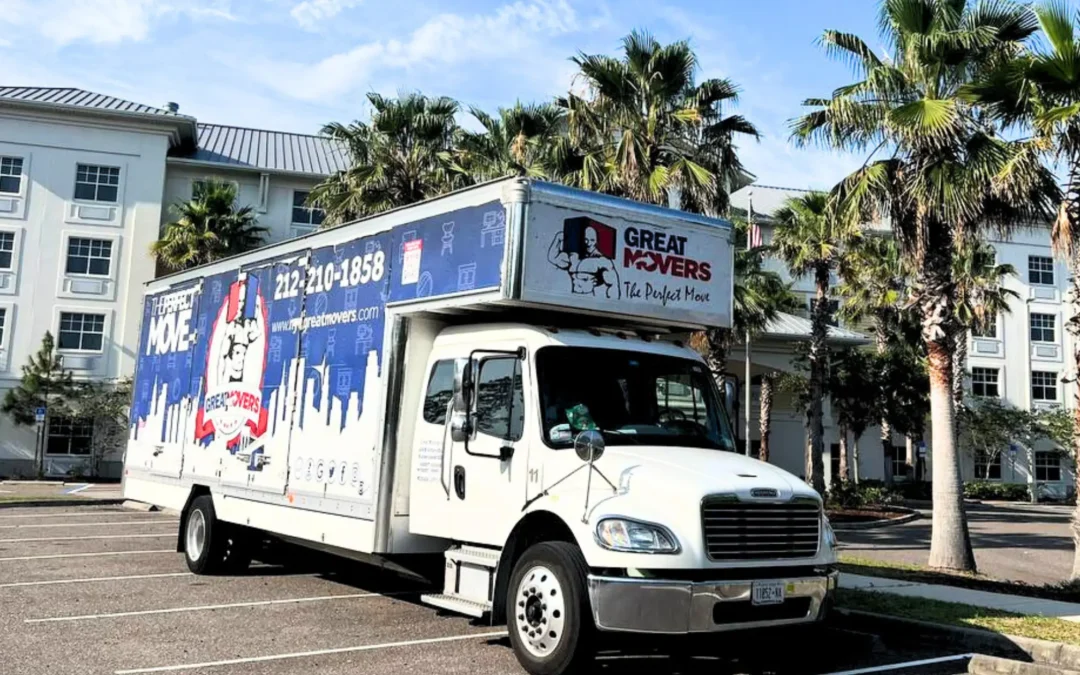Three Things to Know about Living in Manhattan
Your Car is Useless

Paying for parking in the City is obscenely expensive, and finding a home or apartment with private parking is near impossible. Add that to the insanity of Manhattan’s traffic, and there’s really no reason to keep driving. Save yourself the time and money, and ditch the vehicle. As expensive as NYC can be, you’ll be free from the monthly insurance payments along with standard maintenance and gas costs.
Worried about getting around? NYC is one of the most walkable cities in the country. Plus, there are buses and subway trains that operate 24/7, 365. And while NYC residents like to grumble about the rising fare prices, getting around NYC is still cheaper than pretty much everywhere else since you pay a flat fee to get around anywhere in the five boroughs.
If you prefer water travel, you can hop on a ferry to get to different areas of Brooklyn, Queens, The Bronx, and even New Jersey. Of course, NYC is most known for its extensive subway system. Unlike other urban areas, you’ll be able to find a subway going where you want to be, likely in the next 15 minutes. So getting around without a car really isn’t much of a hassle until you want to get out of the city. Even then, Metro-North goes to a lot of popular Westchester areas that don’t require a car to get to the downtown areas so if you want a little time away from the busy city, you can easily hop a train and travel 40 minutes to a quieter town. You can also go to Penn Station and jump on the Long Island Rail Road, or go to Port Authority for travel to New Jersey.
It’s Hard to Get Lost
Remember the movie, “Home Alone 2: Lost in New York”? Total hogwash. New York is a grid system! Want to figure out where you are going? Simply find the nearest crossroads and do the math. In general, avenues run north to south and streets run east to west. Streets are labeled west if they are west of 5th avenue and east if they are east of 5th avenue. If you’re wandering around looking for a building number, know that for avenues, the numbers will go up the further north you go and down the further south you go. For streets, the numbers will go up based on how far away from 5th avenue you go. So for west side streets, the further west you go, the higher the number and similarly with the east side.
With that said, things can get a bit confusing once you get into Greenwich Village as the streets start losing their grid formation so what might have been common sense in Midtown might seem a bit confusing once you go further south. For example, usually streets are parallel to each other so you shouldn’t see streets intersecting. However, in Greenwich Village that goes out the window as you’ll see an intersection between West 10th Street and West 4th Street. Bleecker Street, which runs east to west for the majority of its length, makes an upwards turn after 6th Avenue! Still, for most of Manhattan, you should be able to find your way around easily.
Figuring out the subway system can be a little harder. One thing to be careful about is which direction you’re going and the type of train you’re taking. Make sure to choose the correct direction, either uptown or downtown. As well, make sure to choose the correct local or express train. One side of the tracks will get you to Union Square, while the other will leave you up at 125th street. As one of the oldest subway systems in the world, the NYC subway is often under construction so you should always check the signs posted in the stations for information and listen to the announcements on the train if you don’t see any signs. Of course, if you’ve taken the NYC subway system at all, you’ll know that the announcements aren’t always clear so there will be plenty of times where you’ll be on the correct train, but it ends up taking a different route. Luckily, there are plenty of stops in between, and transfers are free once you’re past the gates.
The New York Attitude is Real
New Yorkers are some of the most welcoming, loving people in America. They also want you to get the heck out of their way. Manhattanites know where they are going, and seriously own the streets of the city. So if you want to do well in Manhattan, don’t crowd the sidewalks, don’t bother anyone with headphones on, and never make eye contact with someone holding a clipboard– they either want your signature or your money. However, don’t be afraid to ask for help if you need it! Most New Yorkers are more than happy to lend a helping hand whether that’s giving you directions, pointing you to the nearest subway station, or just giving you their recommendation on the best restaurant in the area.
A few other don’ts: Don’t call it the Big Apple. To anyone in the tristate area, Manhattan is just “The City” because it is the only city that matters. Don’t go to Times Square for NYE. It’s crowded and freezing, and way less fun than it looks on TV. Finally, don’t be afraid to be yourself. Got a freak flag? Let it fly in Manhattan.
It Can Be Lonely
Despite the fact that Manhattan is home to millions of people, it can be a lonely place as everyone is so focused on the grind. It can be hard to make friends since most people aren’t up for a chat with a random stranger. Heck, most people won’t say hi or smile to you on the streets, they’re too busy trying to get to their next location. If you’re coming from a smaller, more welcoming town, you will be in for a shock. Manhattanites would rather glare at you than smile.
Luckily, there are plenty of activities to attend where you can meet like-minded people. There are dozens of meetup groups covering a wide variety of topics so you can join groups that match your interests. You can even learn something new like a new language, how to code, etc. The best part is that people are more open to friendly conversations during these events as that is literally why they signed up! If you’re an introvert, it might seem like a daunting task, but if you want to meet new people, you’ll have to step outside of your comfort zone.
Who Lives in Manhattan
 No matter your background, language, financial status, or family size, there is a place in Manhattan for you. Manhattan is home to the elites of the Upper East Side, post grads who stayed in town after graduating from NYU, young professionals starting their careers and the CEOs that run Wall Street and everything in between
No matter your background, language, financial status, or family size, there is a place in Manhattan for you. Manhattan is home to the elites of the Upper East Side, post grads who stayed in town after graduating from NYU, young professionals starting their careers and the CEOs that run Wall Street and everything in between
Manhattan’s demographics illuminate the city’s incredible level of diversity. Manhattan is about 45% Caucasian, with 27% of residents identifying as Hispanic, 15% as Black and 10% as Asian. Manhattan is renowned for welcoming residents of all sexual orientations and gender identities. Additionally, the city has relatively even splits between men and women, and married and unmarried citizens. There are around 1.632 million in the city alone so you’re bound to find someone you connect with when you’re living in Manhattan.
Cost of Living in Manhattan
It’s no secret that living in Manhattan is expensive. Living in Manhattan costs 50% more than the American average. Residents can expect to pay “New York City prices” on just about everything, from groceries, to utilities and rent, to personal services.
Thinking of buying a house in Manhattan? You can expect to pay upwards of $1,000,000 for a condo in the city. The famous Brownstones, however, go for much more, sometimes selling for $5,000,000 or more. Renting in Manhattan is also costly, with the median rent resting at $1,500 per month, not including utilities. Again, the cost of living in Manhattan varies wildly depending on the area of the city you are in. Still, it’s certainly not cheap and is one of the reasons why so many people opt to live with roommates in order to split the costs. With that said, life in Manhattan provides plenty of benefits. Plus, you do save in other areas. For example, you won’t have to worry about car payments or car insurance, since you’re renting your landlord/management company will deal with maintenance and water fees. There’s also a ton of free stuff you can enjoy like hitting the beach at Coney Island or the Rockaways, watching Shakespeare in the Park at Central Park, relaxing in one of the many community gardens dotted around the city, and more.
Manhattan Neighborhoods
Manhattan’s neighborhoods can be as small as a cross street, or encompass a square mile. Manhattanites are proud and particular about their neighborhoods (there are 53 discrete in total), and are happy to tell you why their district is the best in NYC. Here are a few neighborhoods in Manhattan that stand out.
Tribeca
Tribeca stands for the “triangle below canal street.” It’s known as the the number one Manhattan neighborhood, according to Business Insider. Tribeca residents love the safe, upscale style of this district, which is home to fine dining experiences and boutique shopping opportunities. An affluent neighborhood, renters in Tribeca pay about $4,100 per month on average for a one-bedroom apartment. It’s also home to some of NYC’s celebrity residents, including Beyonce and Jay-Z.
One of the great things about Tribeca is that the other posh neighborhoods like SoHo, Greenwich Village, and Downtown are within walking distance. You’re also relatively close to the Hudson River Park where you can enjoy a relaxing picnic or go for a run along the water.
SoHo
South of Houston St, you’ll find the trendy neighborhood of SoHo. Filled with cast-iron buildings and lines with cobblestone streets, SoHo is one of the most desirable neighborhoods in Manhattan. It was developed by artists in the 20th century, who were drawn to the area’s large loft spaces and warehouses. Kindled by its artisan residents, SoHo has grown into a neighborhood offering every amenity, specialty stores and a one-of-a-kind community.
Because of its architecture and cobblestone streets, SoHo is a great place for some amazing NYC pictures. Plus, there are plenty of small side streets where you almost feel like you aren’t in a busy city.
Gramercy Park
 If you’re looking for easy access to the rest of the city, while being a little bit removed from the action, Gramercy Park may be the place for you. Gramercy Park is just a stone’s throw away from the Union Square subway stop so you have easy access to almost all of the major train lines. Developed in the 1800s, the area was intended for well-to-do families living in Manhattan and is one of the earliest attempts in the US at ‘city planning’. Gramercy is well known for its gorgeous brownstone houses and clean, well-maintained streets. The actual park in Gramercy Park is exclusive, and getting a key to the park is quite an accomplishment, as the only people with access are those who live directly along its perimeter.
If you’re looking for easy access to the rest of the city, while being a little bit removed from the action, Gramercy Park may be the place for you. Gramercy Park is just a stone’s throw away from the Union Square subway stop so you have easy access to almost all of the major train lines. Developed in the 1800s, the area was intended for well-to-do families living in Manhattan and is one of the earliest attempts in the US at ‘city planning’. Gramercy is well known for its gorgeous brownstone houses and clean, well-maintained streets. The actual park in Gramercy Park is exclusive, and getting a key to the park is quite an accomplishment, as the only people with access are those who live directly along its perimeter.
Lower East Side
Once home to some of the best dive bars in Manhattan, the Lower East Side still has some of the best nightlife around the city and, despite the introduction of luxury apartments and shops, still maintains an unpretentious, no-frills attitude. And while many of the famous live music venues closed a long time ago, there are still some excellent places you can go to support local musicians such as Pianos and Bowery Electric. During the day, enjoy a nice walk along the East River and maybe walk over the Brooklyn Bridge for some great views.
Meatpacking District
This small neighborhood runs from West 14th street south to Gansevoort street and is between Ninth avenue and Hudson street, making it only 44 acres. Despite its small size, the Meatpacking District is one of the most memorable locations thanks to its cobblestone streets, access to the High Line, upscale lounges and restaurants, and is home to Little Island and the Whitney Museum. It’s also a great place to view Manhattanhenge, which is when the setting or rising sun is aligned with the east-west streets of Manhattan. For sunset, this happens sometime between May 28-July 31 and for sunrise it happens between December 5 and January 8.
Manhattan’s Weather
Like most of the mid-Atlantic, Manhattan enjoys a full four seasons, with blistering cold winters and blazing hot summer days. Throughout the year, the temperature in Manhattan can range from 14 degrees to the 90’s. It’s important to note that downtown Manhattan gets even hotter than the surrounding suburbs. The close quarters of buildings and concrete jungle that is New York amplifies the heat. If you plan to start a life in Manhattan, you definitely want to invest in both good winter and summer clothes to make sure you can handle the drastic weather changes.
Precipitation in Manhattan is a common occurrence. Because it’s so close to the coast, Manhattan is significantly affected by hurricanes that travel up from the South. During Hurricane Sandy in 2012, areas below 34th street were without power for around a week. Manhattan is also famously hit by “Nor’Easters” that bring anywhere from several inches to multiple feet of snow to the city.
Manhattan Attractions
You could spend a lifetime in Manhattan and never get bored. Tourists flock to sites like the Empire State Building and Rockefeller Tower. Times Square’s bright lights, costumed greeters and enormous landmark stores are fun to experience, once or twice. But what makes the city unique are the attractions that keep you coming back for more.
Enjoy a Show or Concert
Broadway shows outshine theater anywhere else. Yes, we’re probably biased. But it’s TRUE. Broadway is the home of the most amazing shows ever created, and Manhattanites have the privilege of living just steps away from the iconic stages that line the street. Whether you’re seeing Hamilton for the first (or fifth) time or catching classics like the Lion King, Broadway has shows that fascinate, illuminate, and inspire. There are also plenty of off-Broadway and smaller/indie theaters dotted around the city so if you can’t afford the Broadway prices, you can still watch some amazing plays.
If theater isn’t your thing, Manhattan is home to some of the world’s best performing art centers such as Lincoln Center and Carnegie Hall. You can enjoy awe-inspiring concerts from some of the biggest names in the classical music world, watch an opera, or enjoy some ballet. You might even be able to snag some discounted tickets!
Visit the Museums
There are dozens of museums around Manhattan. Once you’re a resident of NYC, you can often receive discounted or pay-what-you-want prices to some of the top museums like the American Museum of Natural History and the Metropolitan Museum of Art. Some museums also offer a free night like the Whitney Museum (Fridays 7pm-9:30pm), Rubin Museum of Art (Fridays 7pm-10pm), and Museum of Modern Art (Fridays 4pm-8pm). As you might expect, these times are very popular, so you’ll want to make sure you get there beforehand so you’re not stuck waiting in line.
There are other small museums that are just as interesting as the big ones. If you are interested in the subways of NYC, there’s an NYC transit museum. Like design? Check out the Cooper Hewitt Museum.
Get Out in NYC’s Parks
 Walking through Central Park, you manage to leave the city while right in the middle of it. Miles of trails encourage walkers, joggers and bikers to get up and go. Street performers draw huge crowds to show off their talents. But Central Park isn’t the only great park in NYC. A personal favorite to locals is Bryant Park in midtown Manhattan. Though it’s small, Bryant Park makes up for its size in events! Evening movies bring tourists and locals together during the summer months. An ice skating rink and pop up shops mark Christmastime. Bryant park has different events all year long, making it fun to go back to again and again.
Walking through Central Park, you manage to leave the city while right in the middle of it. Miles of trails encourage walkers, joggers and bikers to get up and go. Street performers draw huge crowds to show off their talents. But Central Park isn’t the only great park in NYC. A personal favorite to locals is Bryant Park in midtown Manhattan. Though it’s small, Bryant Park makes up for its size in events! Evening movies bring tourists and locals together during the summer months. An ice skating rink and pop up shops mark Christmastime. Bryant park has different events all year long, making it fun to go back to again and again.
If you really want to get out of the city without actually leaving it, you’ll want to visit Inwood Hill Park. Located on a ridge, the park is raised 200 feet above the Hudson River and contains the largest remaining old-growth forest in Manhattan. Unlike other parks, it is also largely natural, consisting of wooded, non-landscaped hills. It is also home to one of Manhattan’s last remaining salt marshes, which attracts a variety of birds, fish, and even crustaceans.
Of course, both Bryant and Central Park tend to attract a lot of people! If you’re looking for something a bit more private, there are dozens of community gardens dotted around Manhattan. Since these are located off the beaten path, you’ll often be able to enjoy nature without having to deal with crowds. If you end up living near a community garden, you can volunteer your time on the weekends to keep it maintained or pay a small fee and get some space (if there is any available).
Step Back in Time at a Speakeasy
Fun fact: NYC is still home to a number of speakeasies. For a quick history lesson, speakeasies were illegal bars open during the Prohibition Era. They were often found in the back of cafes and bookstores, or in the basements of private homes. Today’s Manhattan speakeasies are an ode to Prohibition living. You’ll have to search to find them, and some even have a password you’ll need to get in! Once inside, you can enjoy the 1920’s decor and vintage cocktails made by Manhattan’s best mixologists.
Working in Manhattan
Schools in Manhattan
Manhattan is home to some of the best schools in the country. From pre-K to college, students can explore hundreds of educational paths through both public and private school systems. Some of the best public high schools in Manhattan include Eleanor Roosevelt High School, the Manhattan Center for Science and Mathematics and New Explorations into Science, Technology and Math.
Higher education in Manhattan is just as prolific. New York University is top rated for it’s Arts programs, including one of the nation’s top Theater programs. Columbia offers an Ivy League education and respected Law School. Juilliard trains our best musicians. And the New York Institute of Technology (NYIT) offers exceptional courses in math and engineering. As well, if you’re a New York State resident, you can qualify for free tuition to SUNY and CUNY undergraduate schools so long as you make under $125,000.
Conclusion
Manhattan is crazy and loud, works hard and plays hard. It’s a city of dreams, and living there is a truly unique experience. If you think Manhattan is calling you, pick up the phone, call us (855) 259-2282 and get moving!
Transitioning to a city as intense as Manhattan can be stressful, so if you need help with moving to Manhattan, NYC Great Moving is here for you. We’re one of the best NYC movers in the business and we’ll take care of everything from packing to transport and delivery, so you can focus on starting your new life as a Manhattanite.
